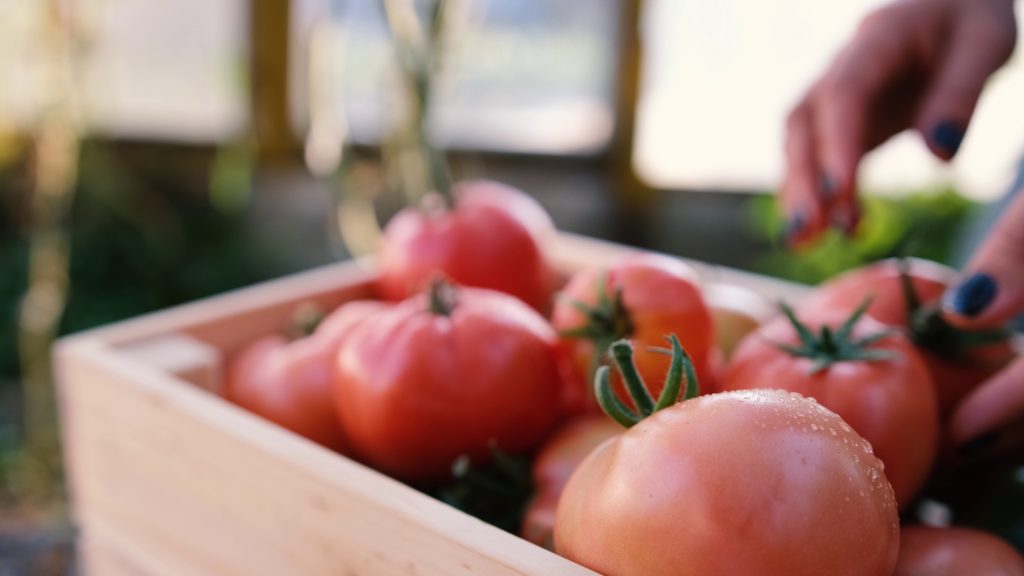Choosing between tomato paste and diced tomatoes comes down to product specs (Brix, texture, viscosity), equipment, and throughput targets. For buyers planning bulk tomatoes programs, the right format also affects landed cost, storage, and line efficiency. This guide breaks down use-cases, packaging, cost drivers, QA flags, and how a wholesale tomato partner can keep the line running strong—without reformulations or surprises.

Why the wholesale tomato format you choose matters
When scaling soups, sauces, chilis, meal kits, or ready meals, the base tomato format affects yield, mouthfeel, solids loading, and cook time. One Source Food Solutions (OSFS) supplies both concentrated paste (including aseptic hot break) and diced in juice across drums, bins, and cans—so it’s possible to dial in performance without changing suppliers.
Quick snapshot: wholesale tomato & bulk tomatoes formats at a glance
- Tomato paste (hot break / fancy / 1.06 puree): High‑Brix concentrate for sauces, ketchups, bases; great for tight viscosity control and smaller storage footprint. Options range from standardized 1.06 puree to hot break paste for aseptic drums/bins.
- Diced tomatoes (aseptic or canned in juice): Intact particulates for chunkier textures; typically packed with a topping juice and firming agents to maintain dice integrity.
Wholesale tomato & bulk tomatoes fundamentals: Brix, texture & processing
- Brix targets drive body and sweetness. Industrial paste commonly ranges ~24–30° Brix (sometimes higher after concentration and aseptic filling), while diced/crushed tends to sit ~5–6° Brix—important when forecasting solids and water additions on the kettle.
- Tomato paste processing concentrates flavor and reduces water. Paste is made by chopping, enzyme deactivation, straining, and vacuum evaporation to ~24% natural tomato soluble solids—ideal for tight viscosity specs.
- Dice integrity matters for finished appearance. Commercial diced tomatoes often include calcium chloride to help cubes hold shape through thermal steps and distribution—important for salads, salsas, and chunky sauces.
When to choose tomato paste (and skip the dice)
Best for:
- Marinara and pizza sauces needing precise Bostwick/flow,
- Condensed/RTS soups targeting consistent mouthfeel,
- Ketchup, BBQ, and base sauces where solids control is critical,
- Cost‑to‑ship and storage optimization (less water moved; tighter cube).
Why it works: Concentration lets R&D hit viscosity and °Brix with fewer variables; aseptic drums/bins streamline year‑round runs.
Specs to watch: °Brix, serum separation, Bostwick at 20 °C (e.g., 1.0–2.0 cm for a standardized puree), and pH. These specs help QA catch drift before it becomes a line issue.
When to choose diced tomatoes (and avoid rework)
Best for:
- Chili, stews, chunky pasta sauce or salsa where visible particulates sell the bite,
- Frozen or chilled meals that rely on piece identity after reheat,
- Applications needing lower solids with fresh‑cut appearance.
Why it works: Diced options (aseptic bulk or canned) are peeled, diced, and packed in topping juice; calcium chloride and citric acid support firmness and pH control—so cubes survive retort or kettle agitation.
Specs to watch: Dice size tolerance, drained weight, piece integrity after thermal abuse, and added‑acids/firming agents compatibility with the label.
Wholesale tomato & bulk tomatoes cost & operations: what really moves the needle
- Landed cost per finished gallon: Tomato paste often wins when the formula adds water on‑site (you’re not paying to ship it). Diced can cost more per unit of solids but may avoid additional particulates processing.
- Throughput & labor: Tomato paste simplifies batching and CIP; diced may require gentle mixing and slower agitation to protect particulates.
- Storage planning: Aseptic drums/bins reduce cold‑chain load; canned diced can buffer short runs or pilot launches without committing bulk storage. Typical bulk pack sizes include 55‑gallon aseptic drums (~475 lb) and 300‑gallon bins (~2,600 lb).
Quality & compliance: documentation that protects the brand
Documentation (COAs, lot traceability, GMP/FSMA alignment) is table stakes. A capable partner provides transparency and forecasts that anticipate supply swings—helpful when audit season collides with seasonal pack realities.
Market context to time bulk tomatoes buys
Global processing volumes and California acreage swing pricing and availability. Industry reporting from trade groups and market bulletins can help plan bulk tomatoes contracts, understand carryover, and anticipate tightness.
Choosing between paste and diced: a simple decision framework
- Target texture
- Chunky visual? Start with diced.
- Smooth/silky? Start with tomato paste.
- Viscosity control & solids math
- Tight Bostwick or yield‑stress? Tomato paste makes spec‑holding easier.
- Thermal & shear profile
- Long cook/high shear? Diced can break down—trial a firmer dice or blend with paste to protect body.
- Storage & run‑length
- Year‑round aseptic bulk? Paste/aseptic diced in drums/bins smooth supply—and both are offered in standard pack sizes.
- Label & cost constraints
- Fewer additives? Hot break tomato paste without additives supports clean labels; verify acids/firmers in diced match the statement of identity.
Wholesale tomato & bulk tomatoes pro tips for R&D and ops
- Blend intelligently: Many lines use diced for particulates plus tomato paste for body—control Brix with water additions, then tweak salt/acids at finish.
- Write the COA spec like the line runs: Include °Brix targets, Bostwick window, pH, drained weight (for diced), and piece‑size tolerance.
- Forecast with industry data: Track reputable processors’ market notes and trade sources to time contracts around expected carryover or tightness.
Where to source
One Source Food Solutions focuses on premium bulk tomatoes with multiple tomato paste and diced formats (aseptic drums/bins and canned). For dependable bulk tomatoes supply, align pack sizes and forecasts with seasonal pack windows. Explore products and market guidance to align specs, packs, and timing with the production schedule.
→ Ready to choose the right wholesale tomato format? Contact One Source Food Solutions to request specs, samples, and pricing.
